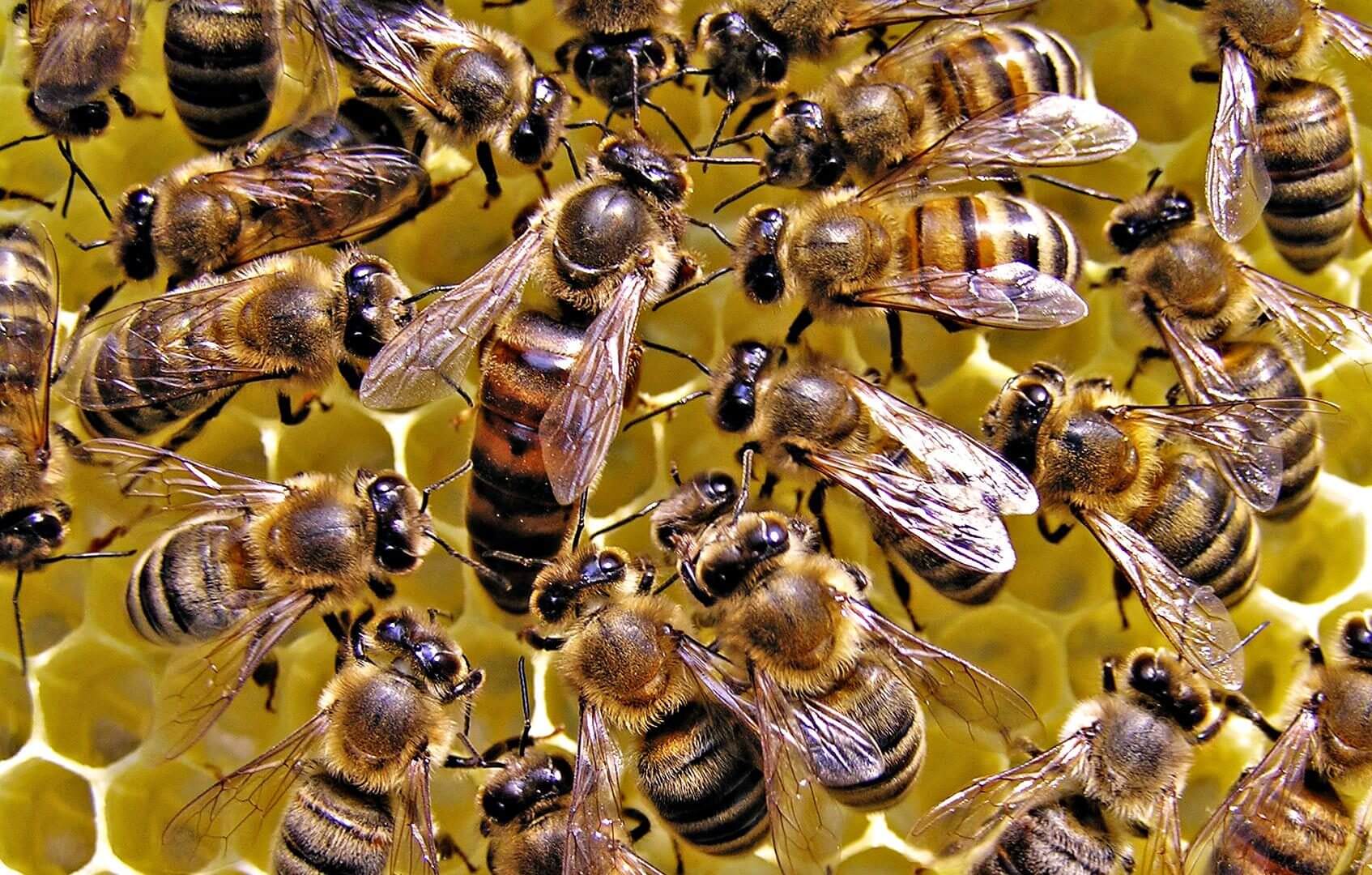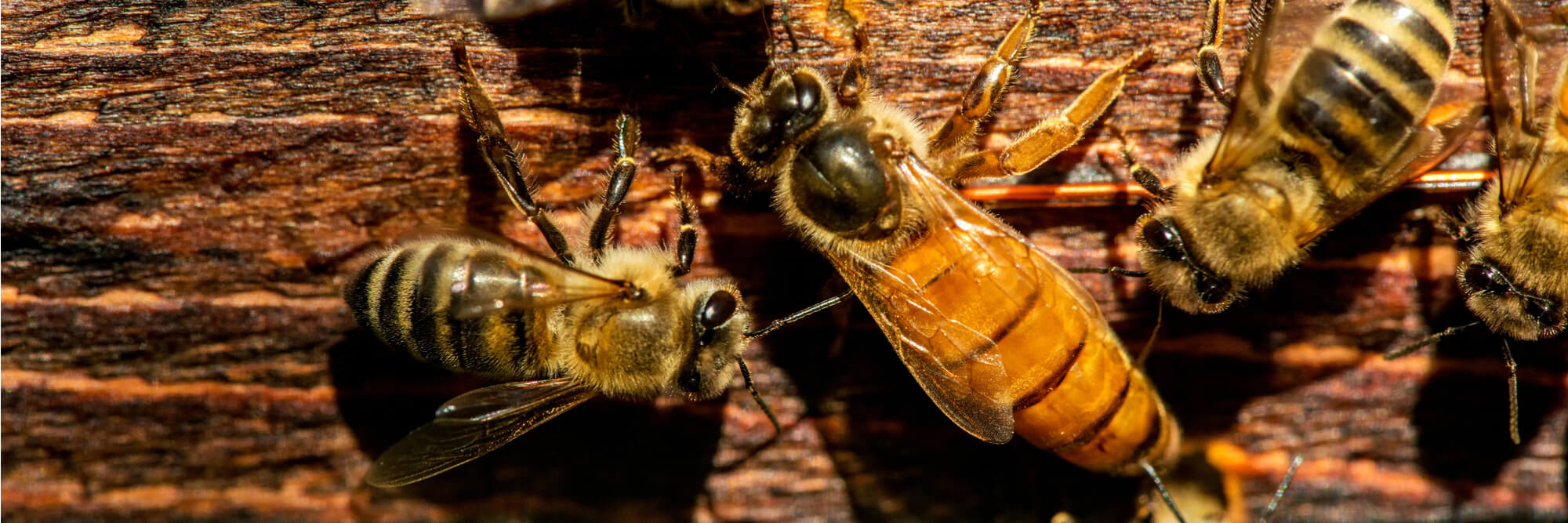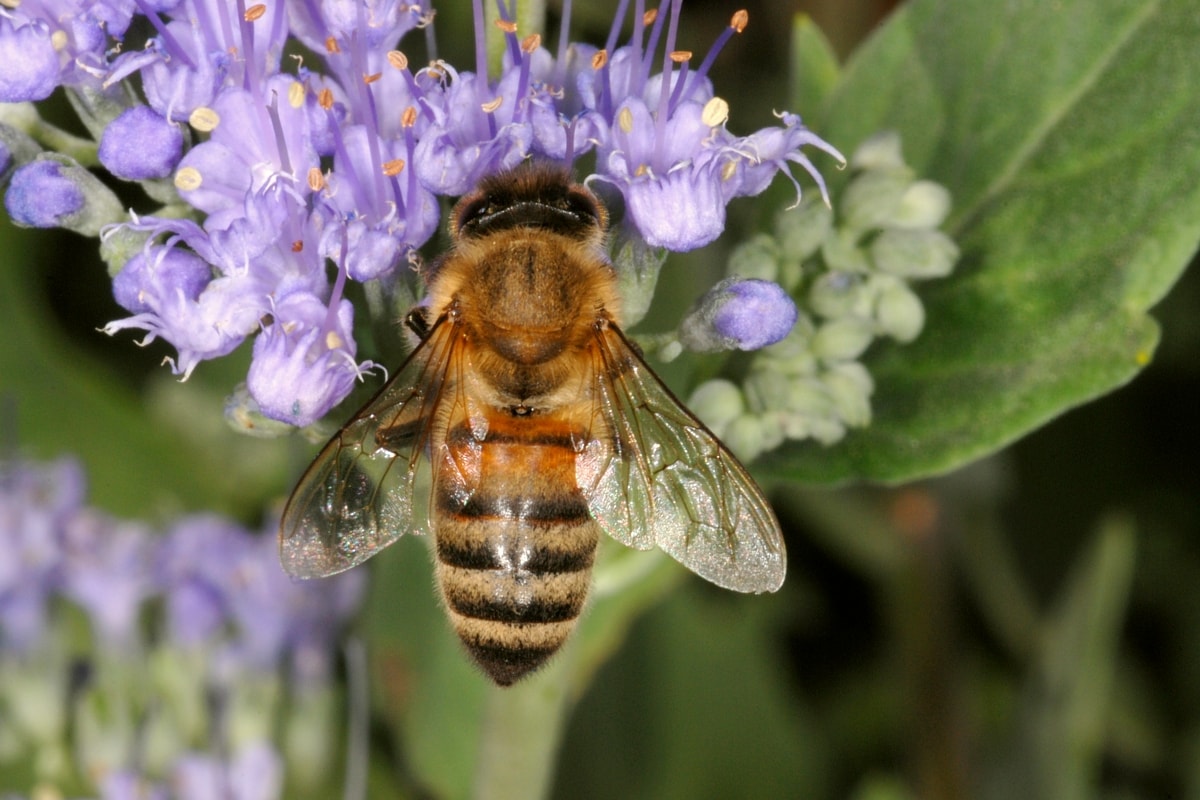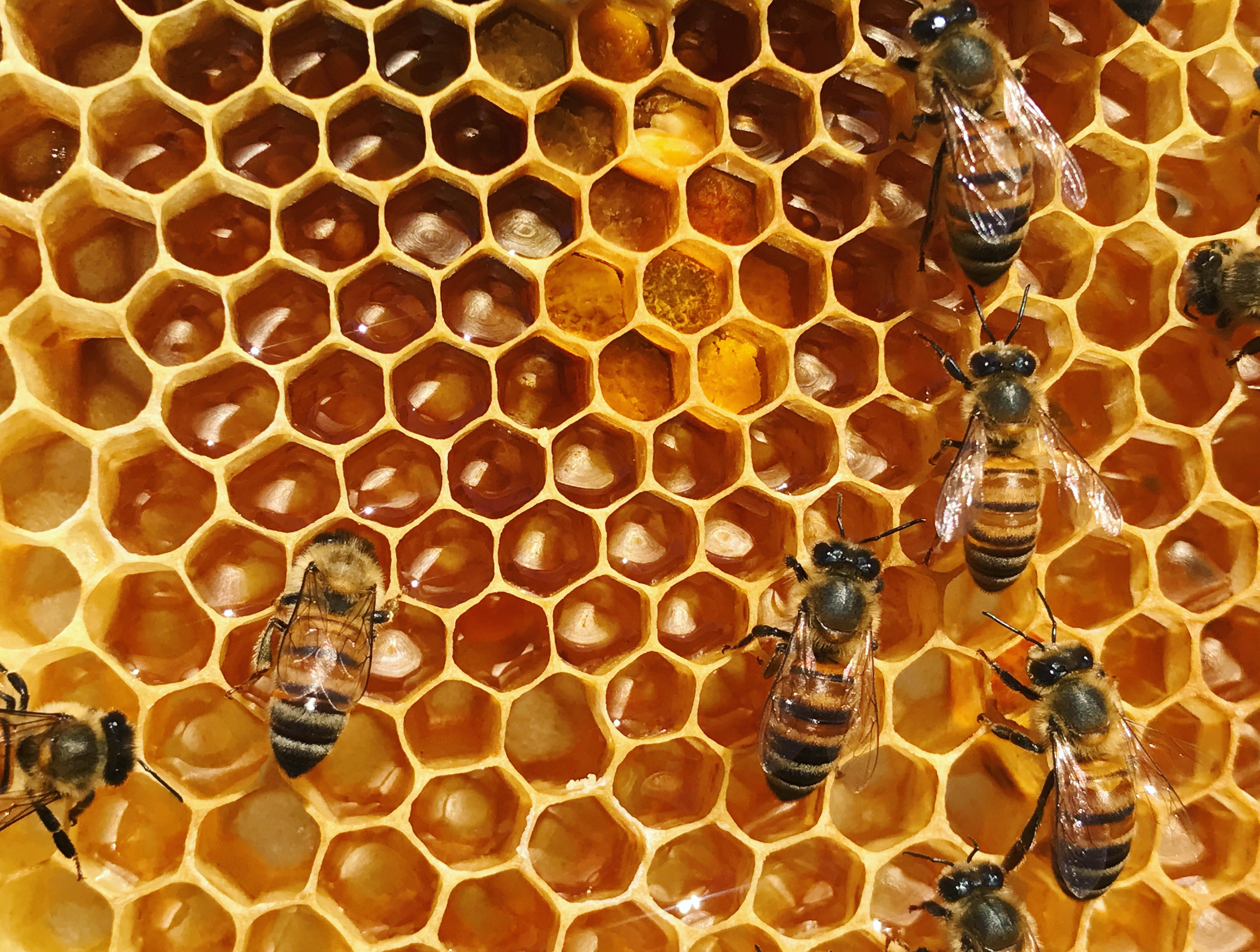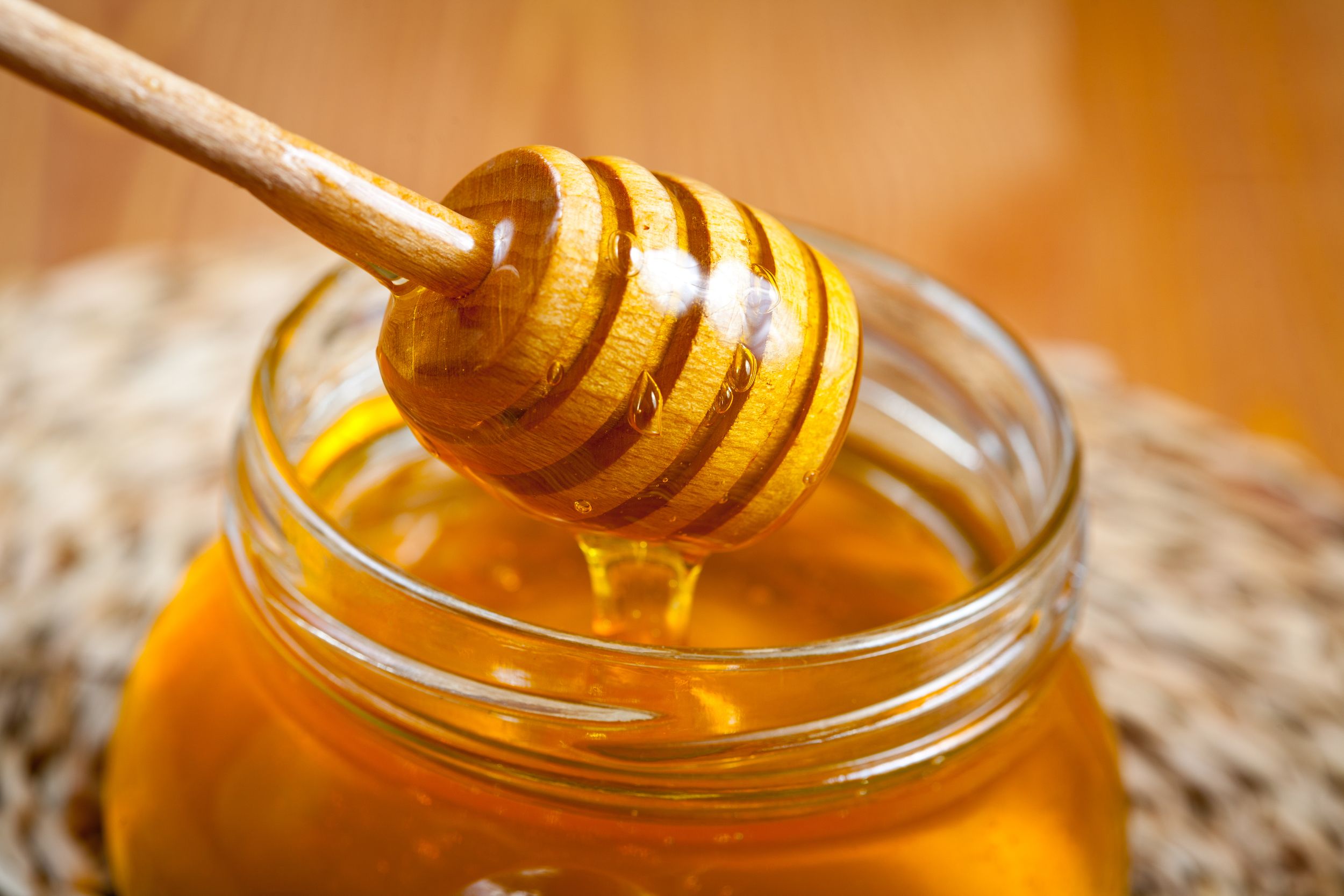Queen Bee
Queen bees are the largest individuals in most colonies and carry out many important functions in the hive. The queen is responsible for laying a constant supply of eggs to build up and maintain the hive’s population at adequate numbers. In a good year, a queen may lay as many as 200,000 eggs!
The queen also produces chemicals called pheromones that control and organize many of the behaviors of her colony. Each queen has her own distinct pheromone profile, which allows her colony to recognize her, defend her and meet her needs to keep the hive safe and strong.
